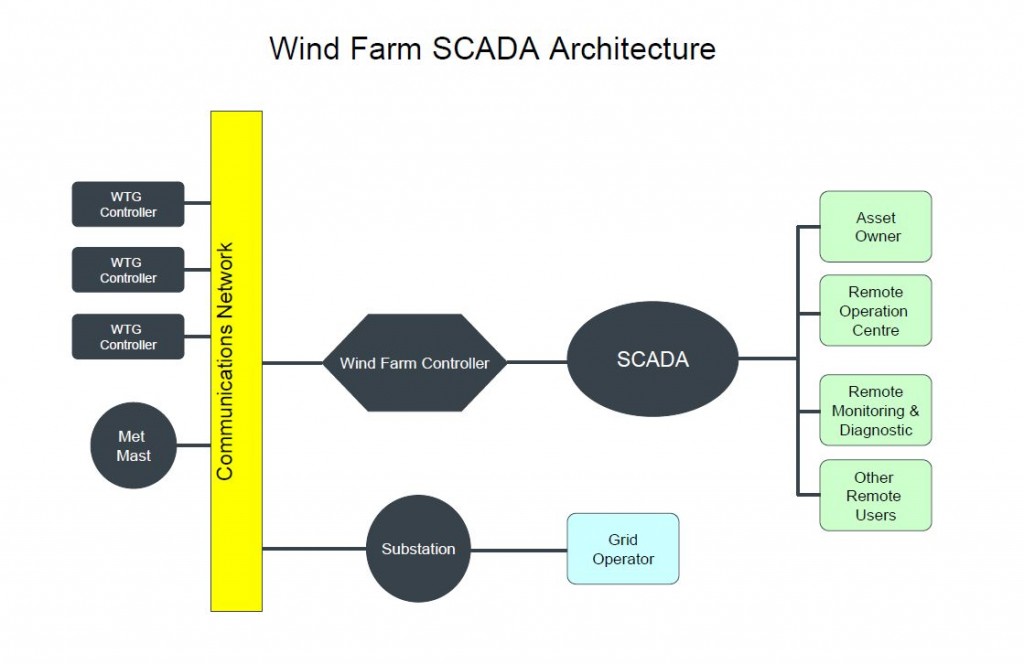SCADA is an acronym that stands for “Supervisory Control And Data Acquisition”.
It is a fundamental tool to monitor and control several parameters of the WTGs, and it’s usual to sell it together with the turbines.
It allows combining, in a single point of control, all the info about WTGs, meteorological mast and substation, serving as the primary interface between the wind plant operator and the wind farm equipment, sending control signals from the wind plant operator to the wind park controller, retrieving and storing operational data from the WTGs and interrogating alarm signals.
The fundamentals characteristics required to a wind farm SCADA system are:
- To integrate in a single system WTGs, substation and meteorological tower info.
- To allow an interrupted access to the data from the local PC (normally located in the substation building) and from remote computers.
- To allow to modify several parameters of the control system of the turbines.
- Each communication protocol used by a part of the system must be compatible with the others.
- A clear hierarchy of all the users must be defined (basically to guarantee the safety of people working inside the machine)
- Several parameters for each component must be shown. Normally, at least the following are required:
- WTGs: status (working, ready, paused, stopped), power (kW), cos j, speed (rotor, generator, wind), temperatures, voltage and current of each phase, active alarms.
- Met Mast: Wind speed and direction, temperature, pressure, battery status.
- Substation: Line voltage and current, active and reactive power delivered, status of alarms and protections.
- The user must be able to change at any time various parameters:
- WTGs: start and stop of the WTG, use of the orientation system, transfer of production data.
- Substation: opening and closing the main switch.
Several reports can be produced with the data provided by the SCADA system, such as determination of the power curve, generated power, availability of the turbine, failures statistics, wind data (speed and turbulence), active and reactive power and cos φ at the substation.
SCADA systems retrieve, store and exports huge amount of data to a variety of stakeholders, everyone with different needs:
Remote operation center: they must be able to use the alarm condition in a quick and efficient manner, discerning the root cause of a fault without being submerged by cascading alarms.
Remote monitoring and diagnostic: after the first intervention from the remote operating center they must be able to interpret data quickly to solve the problem. Additionally historical SCADA data can be used to validate computational models or develop new models.
Asset owners: they will use SCADA output for power revenue calculation, calculation of lost energy, etc.

Leave a Reply